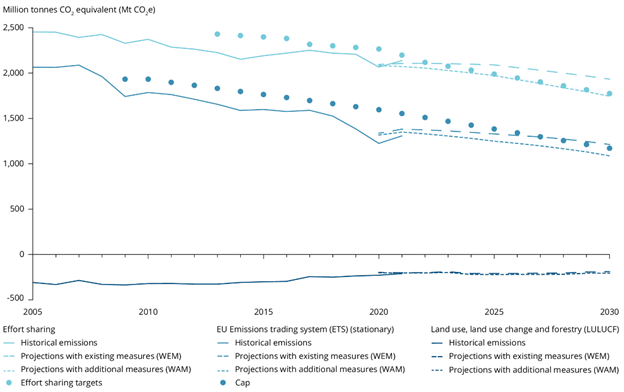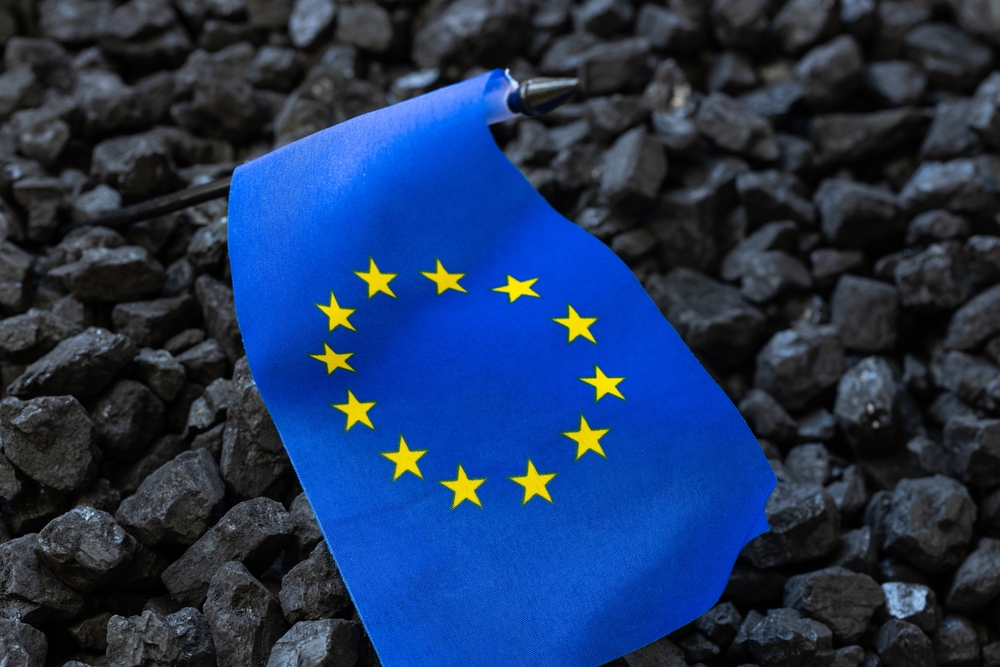Advisors have indicated that they find carbon allowance investing to be most attractive for the diversification potential it can offer portfolios, and those advisors looking for diversification opportunities abroad should look to investing in Europe’s carbon allowances program. The EU ETS continues to make strides in reducing emissions, is priced at an effective range to continue driving change, and has positive underlying fundamentals.
According to the European Environment Agency, greenhouse gas emissions for the bloc are anticipated to fall 41%, though the energy crisis created due to Russia’s ongoing war in Ukraine and the short-term fallback onto coal-generated power could reduce this number. With a goal of net zero by 2050, the EU will need to reduce its emissions twice as fast as it did between 1990 and 2020, providing strong underlying support for the role of carbon allowances.
At this year’s COP27 climate conference, Kristalina Georgieva, managing director of the International Monetary Fund, told Reuters that carbon needs to average about $75 per ton globally by 2030 in order to meet Paris Agreement goals for warming. As of now, the European Union market is the only one that remains consistently near this amount (currently at €74.79 or $77 per ton as of 14 November 2022).
“Unless we price carbon predictably on a trajectory that gets us at least to [a] $75 average price per ton of carbon in 2030, we simply don’t create the incentive for businesses and consumers to shift,” said Georgieva.
The cap-and-trade system, the EU ETS, currently represents about 40% of emissions from the EU, covering large power stations, large heating plants, the aviation sector, and large industrial plants. The emissions that are covered by the ETS have decreased by 37% between 2005–2021, mostly due to decarbonization efforts by the energy providers that must contend with the price pressures of allowances.

Image source: European Environment Agency
Portfolio Diversification Opportunities With Carbon
A recent poll of advisors conducted by VettaFi found that the non-correlated nature of carbon investing as an asset class made the allowance market most attractive (42.9%), compared to 22.4% in favor of the alpha potential it can offer and 18.4% interest in investing for the climate and impact potential.
Carbon allowances bring diversification opportunities for portfolios, particularly within targeted markets such as the European Union allowances. For investors looking for diversification opportunities overseas, Europe’s allowances market is worth strong consideration.

The KraneShares European Carbon Allowance ETF (KEUA) offers targeted exposure to the EU carbon allowances market and is actively managed.
The fund’s benchmark is the IHS Markit Carbon EUA Index, an index that tracks the most-traded EUA futures contracts, a market that is the oldest and most liquid for carbon allowances. The market currently offers coverage for roughly 40% of all emissions from the EU, including 27 member states and Norway, Iceland, and Liechtenstein. The annual cap reduction was recently increased from 2.2% to 4.2% to meet long-term carbon emission targets.
As the fund is actively managed, it may invest in carbon credit futures with different maturity dates or weight futures differently from the index.
KEUA has an expense ratio of 0.78%.
For more news, information, and strategy, visit the Climate Insights Channel.

